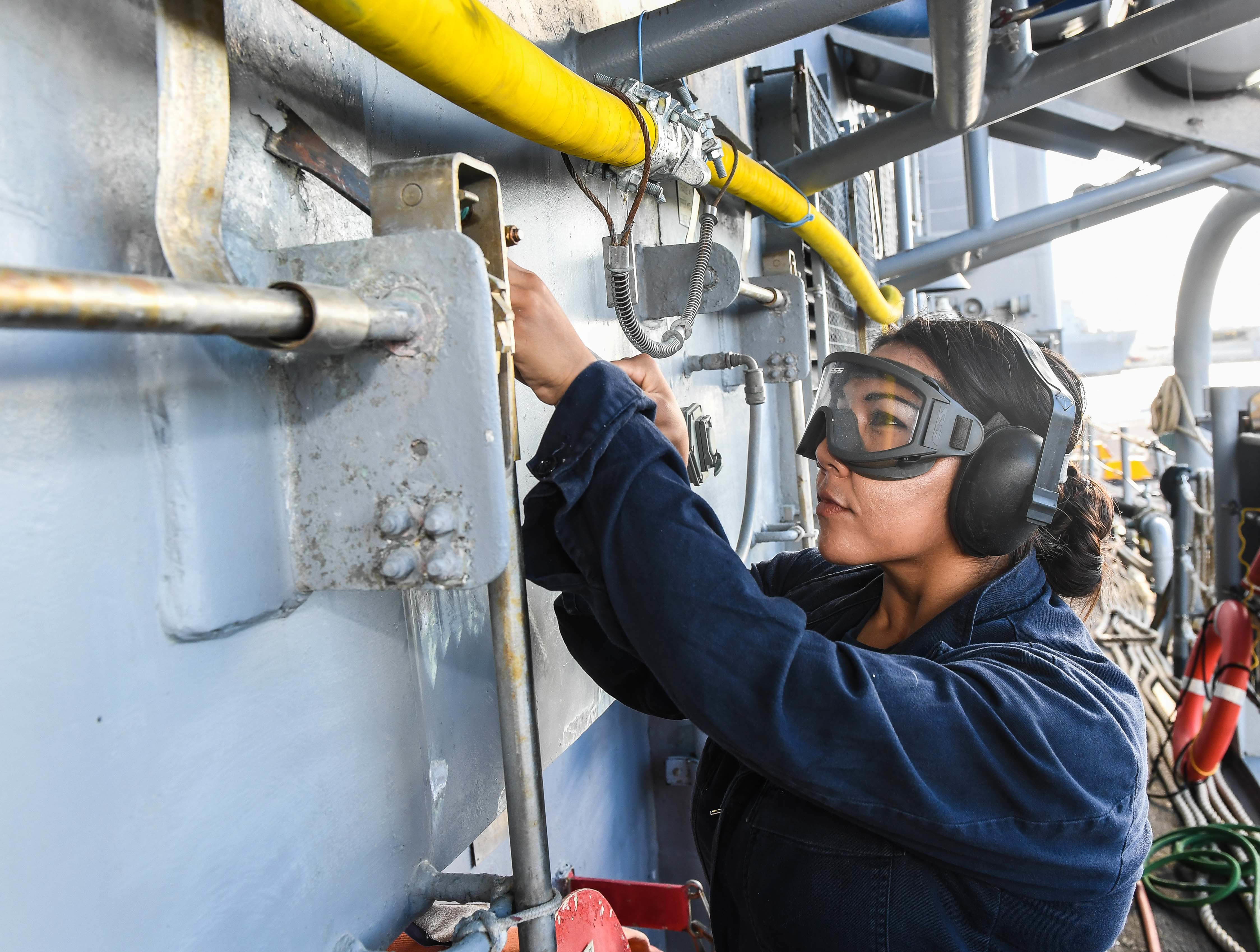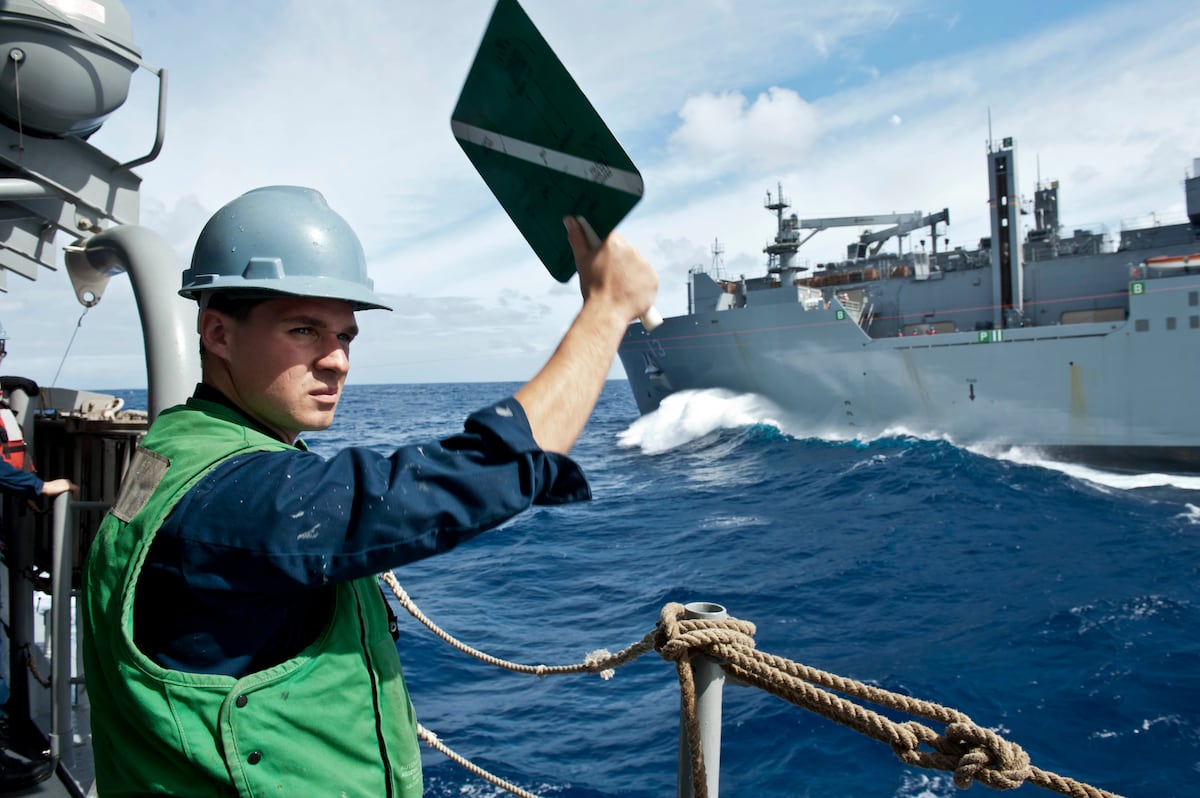The U.S. Navy has wasted $1.84 billion since 2015 on rehabilitating its Ticonderoga class guided-missile cruisers, funds the service would rather have spent on newer technology, according to a government watchdog report.
The Government Accountability Office released its “Navy Ship Modernization” report Monday, noting that the Navy’s cruiser rehab program has had “weak oversight” and been “plagued with problems like scheduled delays, wasted costs and poor-quality work.”
RELATED
In spending an estimated $3.7 billion to modernize seven of the cruisers, which are larger surface warfare ships that bring extensive air defense capabilities to the fight, the service was found to have “wasted” nearly half of those funds, or $1.84 billion, on four cruisers that were divested before even deploying, according to the report.
“The Navy did not effectively plan the cruiser effort,” the report’s authors wrote. “This led to a high volume of unplanned work — 9,000 contract changes — resulting in cost growth and schedule delays.”
The service has not yet found the root causes of the program’s problems, the authors noted.
The Navy intended to rehab 11 ships as part of the effort. Seven made the final cut for upgrades, but only three of those in the rehab effort are slated to complete the modernization overhaul. None, however, will add the five extra years of service life that the program intended to achieve, the report said.
According to the report, the cost for modernizing the four ships that never deployed is broken down as follows:
- Hue City: $161.15 million
- Anzio: $250.54 million
- Cowpens: $678.56 million
- Vicksburg: $745.05 million
In 2012, the Navy proposed retiring several cruisers to better meet budget constraints, according to the report. But Congress rejected that idea and instead gave the service funds to conduct the cruiser modernization.
That effort was expected to conclude by Fiscal Year 2026, according to the report. Instead, Navy officials sought to spend money on its 23-ship destroyer fleet, which are “critical” to a combat-ready fleet, the report said.
The report’s authors made six recommendations to the secretary of the Navy, including:
- Ensuring the service updates its policy on planning and oversight for future large-scale modernization.
- Codifying the cruiser modification lesson learned so that ownership of vessels is not transferred from the fleet for major modernization.
- Direct the chief of Naval Operations and the head of Naval Sea Systems Command to assess causes of problems in the cruiser modernization program and codify strategies to mitigate those problems in the future.
- Direct the NAVSEA commander to reassess their approach to overall quality assurance.
- Direct the NAVSEA commander and CNO to assign responsibility and accountability for implementing corrective actions for ship modernization.
- Ensure the CNO documents a comprehensive assessment on operational implications of its divestment plans for three modernized cruisers in fiscal 2026 and 2027.
The report follows another GAO report released this month, which noted that nearly half of the Navy’s 32 amphibious assault ships, vessels the Marines rely on to conduct littoral combat and support naval operations close to shore, are usually unavailable due to maintenance work.
That unavailability has often meant late or missed exercises and deployments for Marines who depend on those ships to operate.

The Dec. 3 GAO report audited amphibious warfare ship maintenance at Naval Station Norfolk, Virginia, and Naval Base San Diego, California, from April 2023 to December 2024.
Due to the shortage, both the Boxer and America amphibious readiness groups, and their associated Marine Expeditionary Units, were plagued by missed exercises and delayed deployments.
“The current state of readiness impacts the Marine Corps’ capacity to support Combatant Command’s needs, to maintain a 3.0 presence with Marine Expeditionary Units performing heel-to-toe deployments and ultimately limits our ability to respond to crisis around the globe,” said Lt. Col. Joshua Benson, Marine spokesman.
Of the 32 amphibious warfare ships, officials expect that 16 will not reach their 40-year service life. But the entire amphib fleet must operate beyond that end date to maintain at least a 31-amphibious warfare ship requirement, according to the report.
That is expected to cost an estimated $1 billion per ship, the report said.
Todd South has written about crime, courts, government and the military for multiple publications since 2004 and was named a 2014 Pulitzer finalist for a co-written project on witness intimidation. Todd is a Marine veteran of the Iraq War.
Read the full article here





